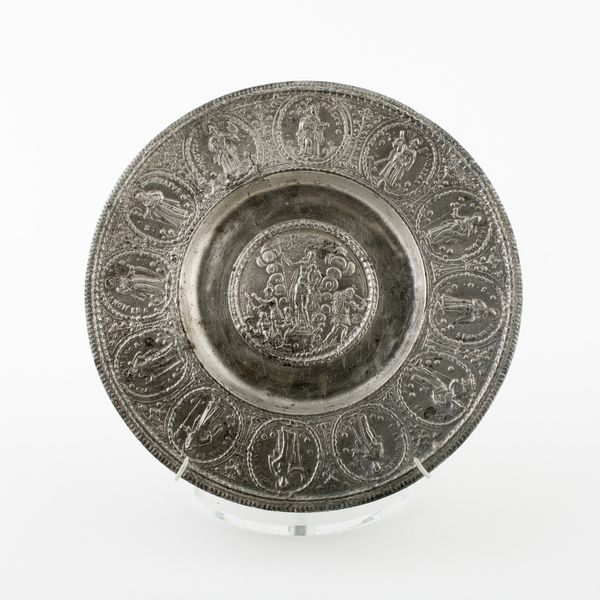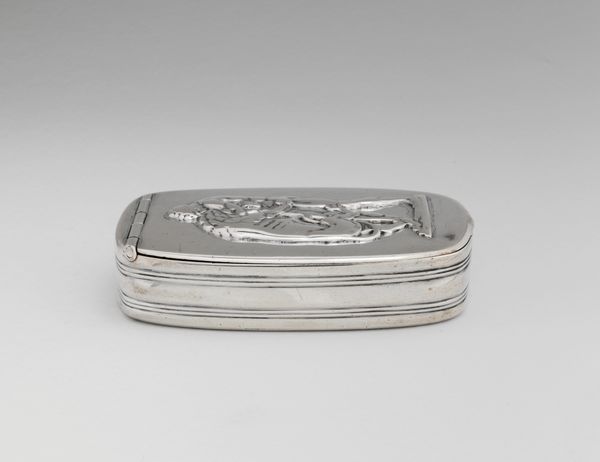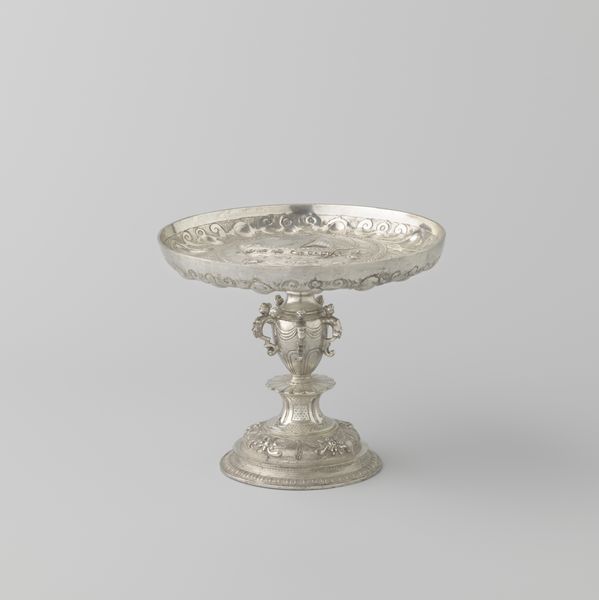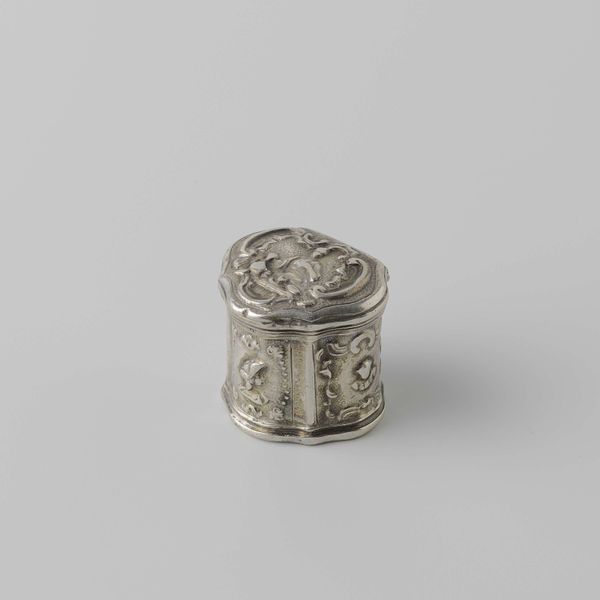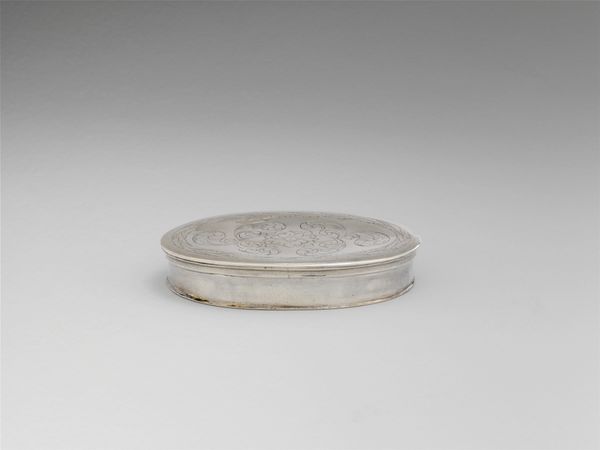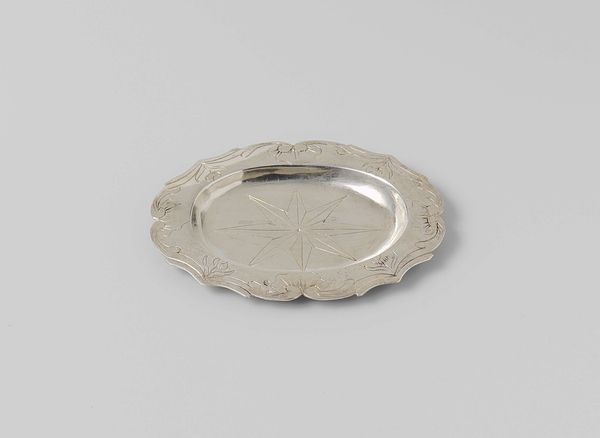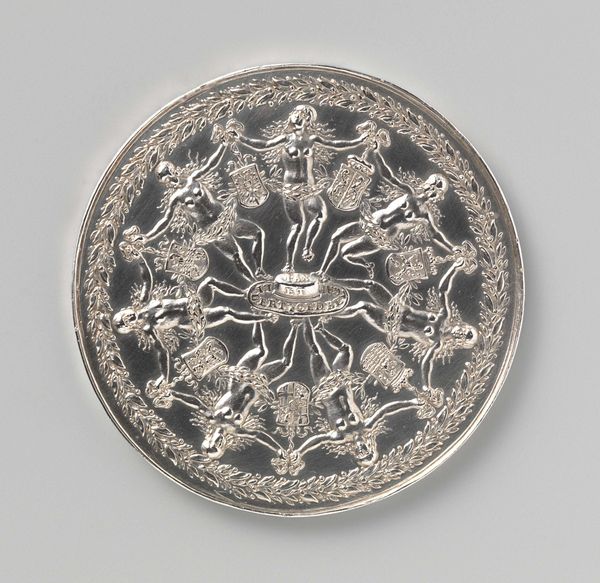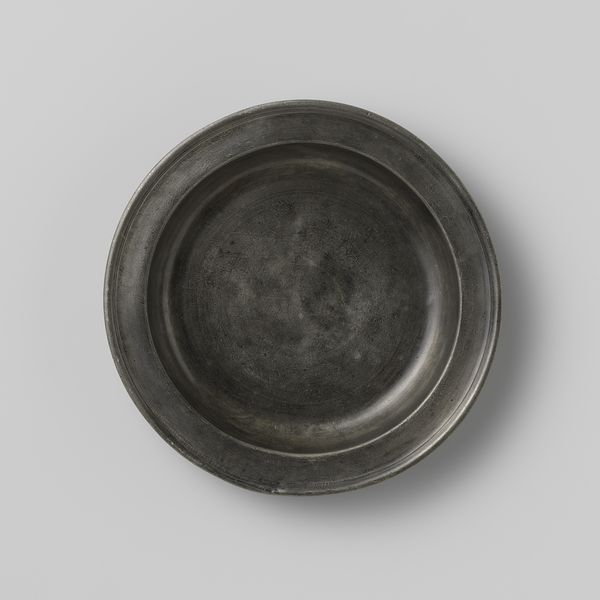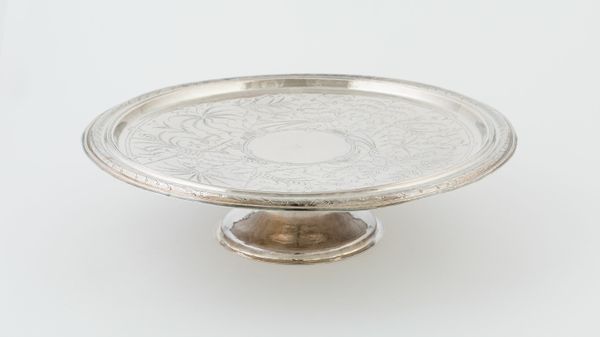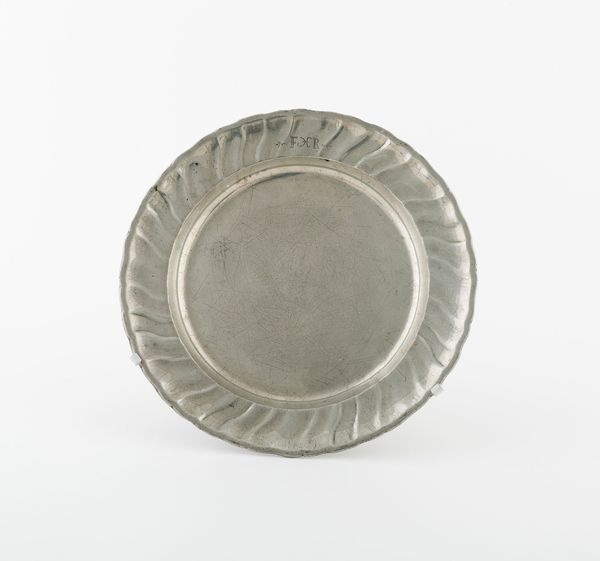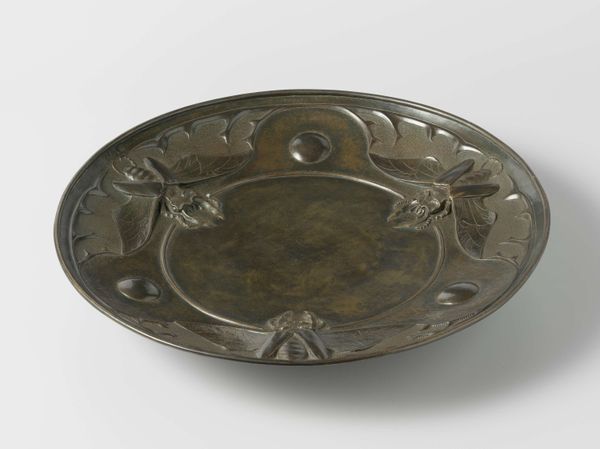
silver, metal, engraving
#
medieval
#
silver
#
metal
#
decorative-art
#
engraving
Dimensions: height 2.0 cm, diameter 5.0 cm
Copyright: Rijks Museum: Open Domain
Curator: Here we have what's known as the Compass of Louis de Boisot, dating back to around 1570. It's a meticulously crafted piece, made primarily of silver and metal with engraved detailing, currently residing here at the Rijksmuseum. Editor: It looks so ornate! Almost delicate, despite being metal. I immediately get a sense of wealth and privilege, though perhaps that’s stating the obvious. Curator: Not at all! Boisot was a prominent figure, an admiral during the Eighty Years' War. Objects like these were not merely functional but symbols of status and power, demonstrating both military prowess and the wealth necessary to commission such finery. The museum context reinforces that prestige. Editor: Knowing that, it changes the piece. It's not just a compass, it's a declaration. I'm curious, what exactly would it have been used for in practical terms? The engravings almost seem to obscure the function. Curator: The compass would certainly have been functional for navigation, vital during maritime expeditions of that era. But you're right; the decorative element elevates it beyond a simple tool. The engravings speak to humanist learning and refined taste, something that marked an individual’s belonging to elite circles. Editor: The engraved details – what do they depict? And how would they speak to the era's anxieties and hopes, not just about military exploits but also, say, shifting worldviews and cultural exchange? I’m curious about the political weight these artistic choices held. Curator: That's insightful. The designs often incorporate symbolic motifs and family crests. It was about claiming space within a highly visual and politically charged world. Its form connects to older traditions, a claim of legitimacy even during times of immense upheaval. Editor: The decision to create something so elaborate from practical materials says a lot, doesn't it? It feels like an attempt to exert control, not just over physical spaces, but also over how one is perceived in history. The level of detail practically demands to be analyzed, understood, placed. Curator: Precisely. The compass is a historical artifact that allows us to investigate the personal, political, and material contexts of the Dutch Golden Age and its complex negotiations of identity. Editor: This was much more than just a navigation tool then. It's a powerful statement piece about the person and his legacy in a transforming society. Food for thought.
Comments
rijksmuseum about 2 years ago
⋮
Louis de Boisot was an admiral from Zeeland. He is chiefly remembered for leading the forces that breached the dikes around Leiden during the Spanish siege of the city. The rising water forced the Spaniards to flee, and Boisot’s flotilla was able to sail into the city on 3 October 1574. This compass bears his family arms and is reputed to have belonged to him.
Join the conversation
Join millions of artists and users on Artera today and experience the ultimate creative platform.
